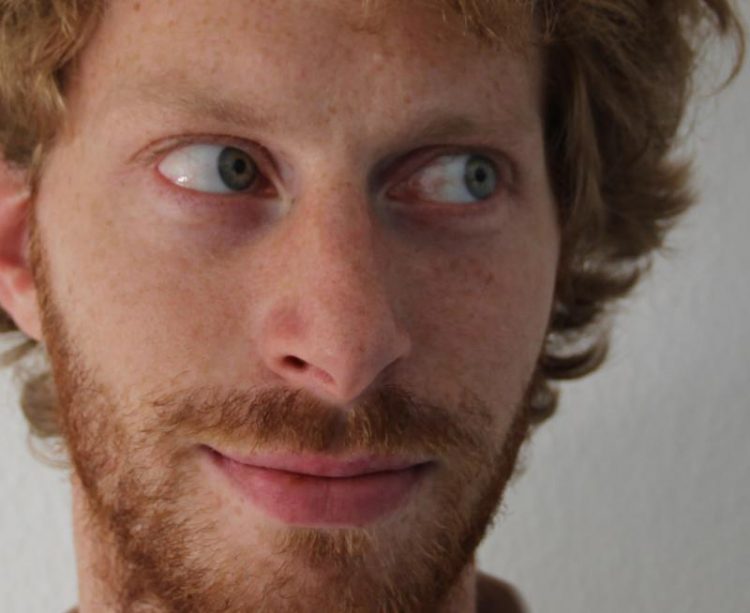A game of ping pong for the eyes

Brain cells encoding both the speed of the landscape and the eye movement ensure that we can clearly recognize a passing scenery instead of seeing it blurred. Mareike Kardinal/Bernstein Koordinationsstelle (BCOS)
Enjoying the landscape when traveling by train—while this activity sounds like pure relaxation, in reality, it requires maximum performance of our eyes’ motor system. To prevent blurring of the passing image, our eyes need to follow the environmental pace with many repetitive brief movements.
Scientists led by Professor Stefan Glasauer at the Bernstein Center and LMU Munich have now found in collaboration with colleagues from the Washington National Primate Research Center at the University of Washington in Seattle that neurons in the posterior parietal lobe play an important role in the conversion of the landscape stimuli into a control signal for the eye muscles.
“By means of electrophysiological recordings, we could show that nerve cells of the so-called MSTd area combine information about the motion of the visual stimulus on the retina with the eye movement speed,” Lukas Brostek—first author of the study—explains.
The way how this is done clearly differs from cell to cell—hereby enabling the generation of completely new signals. Using computer models, the researchers demonstrated that the observed distribution of signal combinations corresponds exactly to the one required to calculate the velocity of the ambient scene. This is the information the brain ultimately requires to control eye movements.
Several areas of the brain are involved in the control of the optokinetic reflex. The necessary information processing includes essentially three steps: In a first step, the speed of a visual stimulus on the retina is calculated. In a second step, the proper eye motion is combined with this information to obtain the environmental velocity.
This is the process, the researchers were now able to localize in the brain. “The neurons we have recorded from provide the basis for the final step—the unconscious control of eye muscles. Hereby they ensure that our eye movements match the environmental motion and that we can recognize a passing scenery instead of seeing it blurred,” Glasauer says.
The Bernstein Center Munich is part of the National Bernstein Network Computational Neuroscience in Germany. With this funding initiative, the German Federal Ministry of Education and Research (BMBF) has supported the new discipline of Computational Neuroscience since 2004 with over 180 million Euros. The network is named after the German physiologist Julius Bernstein (1835-1917).
Contact:
Prof. Dr. Stefan Glasauer
LMU Munich
Department of Neurology
Marchioninistr. 15
81377 Munich (Germany)
Tel: +49 (0)89 7095-4839
Email: sglasauer@nefo.med.uni-muenchen.de
Original publication:
L. Brostek, U. Büttner, M. J. Mustari & S. Glasauer (2014): Eye velocity gain fields in MSTd during optokinetic stimulation. Cerebral Cortex, advanced online publication
doi: 10.1093/cercor/bhu024
http://www.bccn-munich.de/people/scientists-2/stefan-glasauer Stefan Glasauer
http://www.bccn-munich.de Bernstein Center München
http://www.uni-muenchen.de LMU Munich
http://www.nncn.de National Bernstein Network Computational Neuroscience
Media Contact
All latest news from the category: Life Sciences and Chemistry
Articles and reports from the Life Sciences and chemistry area deal with applied and basic research into modern biology, chemistry and human medicine.
Valuable information can be found on a range of life sciences fields including bacteriology, biochemistry, bionics, bioinformatics, biophysics, biotechnology, genetics, geobotany, human biology, marine biology, microbiology, molecular biology, cellular biology, zoology, bioinorganic chemistry, microchemistry and environmental chemistry.
Newest articles

Superradiant atoms could push the boundaries of how precisely time can be measured
Superradiant atoms can help us measure time more precisely than ever. In a new study, researchers from the University of Copenhagen present a new method for measuring the time interval,…

Ion thermoelectric conversion devices for near room temperature
The electrode sheet of the thermoelectric device consists of ionic hydrogel, which is sandwiched between the electrodes to form, and the Prussian blue on the electrode undergoes a redox reaction…

Zap Energy achieves 37-million-degree temperatures in a compact device
New publication reports record electron temperatures for a small-scale, sheared-flow-stabilized Z-pinch fusion device. In the nine decades since humans first produced fusion reactions, only a few fusion technologies have demonstrated…





















